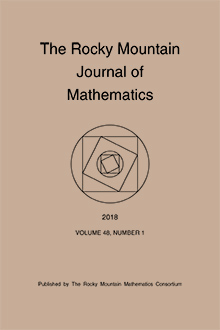Abstract
An $f$-ring is called quasi-normal if the sum of any two different minimal prime $\ell $-ideals is either a maximal $\ell $-ideal or the entire $f$-ring. Recall that the \textit {zero-component} of a prime ideal $P$ of a commutative ring $A$ is the ideal \[ O_P=\{a\in A\mid ab=0 \mbox { for some } b\in A\setminus P\}. \] \vspace {0.5pt}
\noindent Let $C(X)$ be the $f$-ring of continuous real-valued functions on a Tychonoff space $X$. Larson proved that $C(\beta X)$ is quasi-normal precisely when $C(X)$ is quasi-normal and the zero-component of every hyper-real ideal of $C(X)$ is prime. We show that this result is actually purely ring-theoretic and thus deduce its extension to the $f$-rings $\mathcal {R}L$ of continuous real-valued functions on a frame $L$. A subspace of $X$ is called a $2$-boundary subspace if it is of the form $cl _X(C)\cap cl _X(D)$ for some disjoint cozero-sets $C$ and $D$ of $X$. For normal spaces, Kimber proved that $C(X)$ is quasi-normal precisely when every $2$-boundary subspace of $X$ is a $P$-space. By viewing spaces as locales, we obtain a characterization along similar lines which does not require normality, namely, for any Tychonoff space $X$, $C(X)$ is quasi-normal if and only if every $2$-boundary sublocale of the Lindel\"{o}f reflection of $X$ in the category of locales is a $P$-frame.
Citation
Themba Dube. "On quasi-normality of function rings." Rocky Mountain J. Math. 48 (1) 157 - 179, 2018. https://doi.org/10.1216/RMJ-2018-48-1-157
Information





